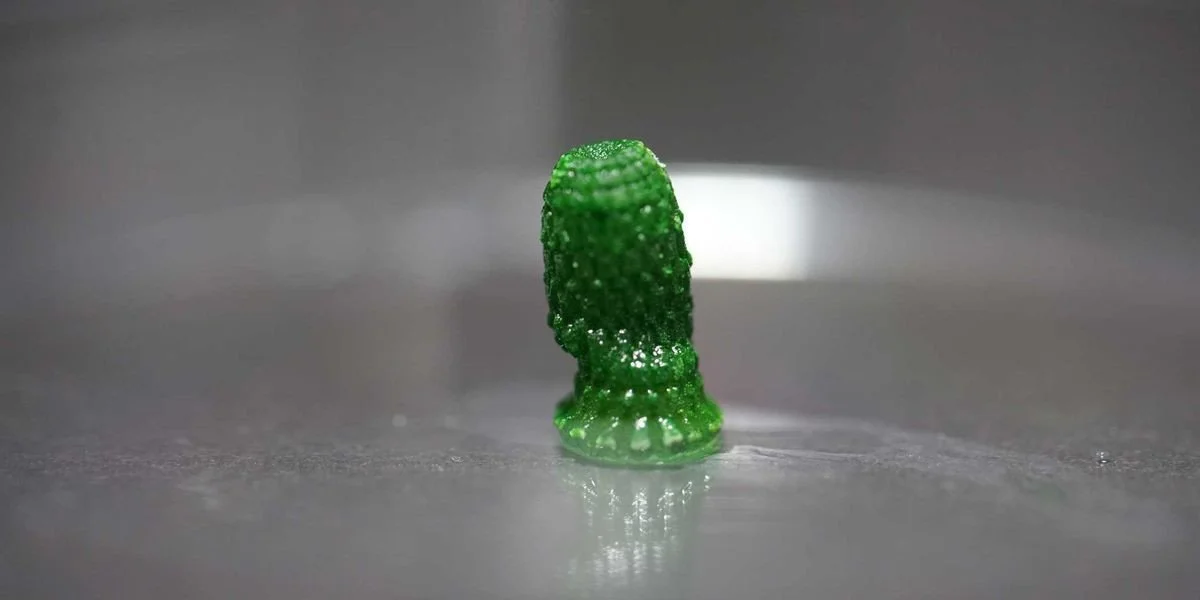A groundbreaking innovation with the potential to transform building materials and environmental technology has been unveiled by a research team at ETH Zurich. The team has developed a new kind of living material—one that not only "breathes" but also actively captures carbon dioxide (CO₂) from the atmosphere. This novel material incorporates cyanobacteria, photosynthetic microorganisms among the oldest life forms on Earth, into a 3D-printable gel.
The result of this interdisciplinary approach—recently published in Nature Communications—is a living, growing material with dual carbon capture capability. Specifically, it stores CO₂ both by creating biomass and by forming inorganic compounds like carbonate salts. This dual function ensures more stable, long-term carbon storage.
A Material That Grows—and Captures CO₂
The new material can take various shapes through 3D printing and requires only light, artificial seawater, and CO₂ to grow. According to the researchers, it could one day be integrated directly into buildings, making carbon capture a built-in function of architectural infrastructure.
The key innovation lies in the cyanobacteria’s ability not only to absorb CO₂ and convert it into organic matter, but also to alter their chemical environment to form solid carbonate salts such as limestone. Researchers leveraged this process so that minerals deposit inside the material, reinforcing it over time. As a result, the initially soft material gradually hardens, gaining structural stability.
In tests lasting 400 days, the material continued to absorb CO₂, with most of the carbon stored in inorganic form—about 26 milligrams of CO₂ per gram of material. This is a significantly higher performance than other biological methods and is comparable to chemical carbon storage used in recycled concrete.
Designed for Performance and Longevity
The cyanobacteria are housed in a hydrogel—a water-rich polymer designed to allow light, CO₂, and nutrients to reach the cells. This setup keeps the microbes alive and active for extended periods. To boost performance, the team also optimized the geometry of the printed structures, increasing surface exposure to light and promoting capillary-driven nutrient distribution.
Dalia Dranseike, co-author of the study, emphasized that this design enabled the cyanobacteria to remain productive for over a year, showcasing the system's durability and viability.
This living material is expected to become a sustainable and energy-efficient solution for atmospheric carbon capture, complementing existing chemical methods. The research team plans to explore its use as a façade coating for buildings, offering continuous CO₂ absorption throughout the building’s lifespan.
From the Lab to Real-World Applications
The concept has already moved beyond the lab to its first real-world applications. At the Venice Architecture Biennale, the installation Picoplanktonics showcased 3D-printed structures made from the material, shaped like tree trunks up to three meters tall. These living sculptures can capture up to 18 kilograms of CO₂ per year—the equivalent of what a 20-year-old pine tree absorbs annually.
At the Triennale di Milano, another project titled Dafne's Skin explores the use of living materials as architectural coatings. Microorganisms grow on wooden tiles, forming a green patina that transforms weathering into an aesthetic and functional feature.
This living material is the result of the ALIVE (Advanced Engineering with Living Materials) initiative at ETH Zurich, which fosters collaboration among architects, biologists, engineers, and materials scientists. The aim is to develop new bio-based materials for a more sustainable future.







